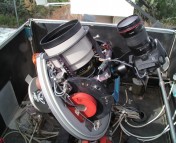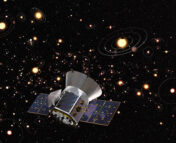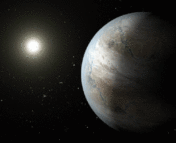Title: Which stars can see Earth as a transiting exoplanet?
Authors: Lisa Kaltenegger and Josh Pepper
Authors’ Institution: Cornell University and Lehigh University
Status: Published in MNRAS [open access]
An exoplanet is a planet that orbits another star that is not our Sun, and in the nearly 30 years of exoplanet science, we have discovered over 5000 of them. But, if you were an astronomer living on one of these exoplanets, then looking back at our Earth, you would say that it is an exoplanet from your perspective! This begs the question: have alien scientists discovered Earth? Is anyone looking back at us? While these questions border on science fiction, we can still begin to quantify scientifically-based answers.
The most successful technique we have used for discovering exoplanets is the transit method, in which we continuously observe a star and look for periodic dimming events from the exoplanet passing in between us and the host star, blocking some of the star light for a short time. This method has proven very powerful for discovering many exoplanets because we can observe thousands of stars simultaneously, as opposed to other discovery methods in which we must observe one star at a time. Through the transit method alone, we have discovered almost 4000 of the 5000+ known exoplanets, that’s nearly 80%! This begs the question, if we are so successful in leveraging the transit method, could alien exoplanet scientists be doing the same thing? And if so, could they have seen our Earth transit our Sun?
While we cannot know for certain if any aliens are actually looking for Earth as a transiting exoplanet, we can constrain how many might even have the opportunity to find us. While so successful, the transit method has a serious drawback. It requires the precise alignment of our Earth, the exoplanet, and the host star. If the alignment is even a little off, observers on Earth will not see the exoplanet as transiting (see Figure 1). Furthermore, the transiting window becomes smaller the further the exoplanet is from its host star. Exoplanets with long orbital periods have extremely small transiting windows and so they are very rare finds via the transit method. For example, of the nearly 4000 exoplanets we have detected by transits, only 203 of them (5%) have orbital periods longer than 88 days, the orbital period of planet Mercury which is the shortest orbital period in our solar system. It is incredibly rare to find a planet with an orbital period as long as Earth’s, 365 days, not because they don’t exist, but solely because the odds of that perfect alignment are so small. Therefore, if alien astronomers even want to have a chance to detect Earth as transiting, their planetary system must have this alignment with our own system.
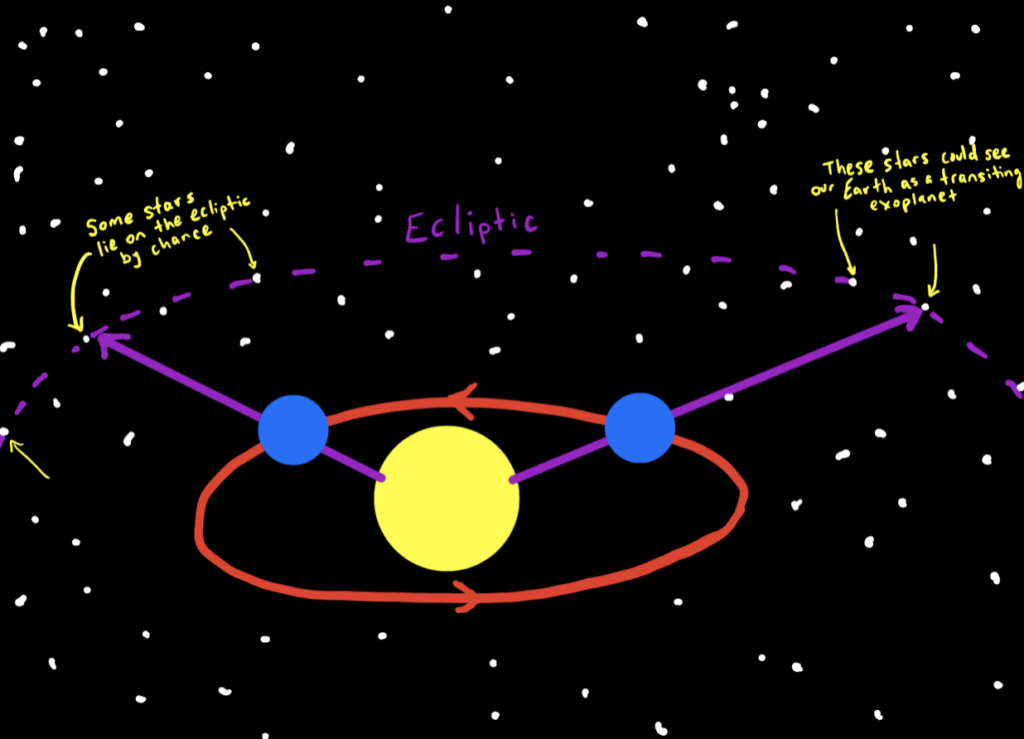
So which nearby stars have this rare alignment? Today’s paper has set out to answer this exact question. The authors use the Gaia and the TESS catalogs, two space-based observatories designed to scan the entire sky. Using these data sets, they can identify all stars that sit within 0.262 degrees of the Ecliptic Plane, the imaginary plane through space that all of our Solar System’s planets sit on with the Sun, see Figure 1. If this imaginary plane were extended to infinity in all directions, any other stars that sit on (or sufficiently close to) the plane are aligned with us, and therefore they are the stars which could host alien planets who could see Earth as transiting. The team surveyed only Main Sequence stars, specifically excluding evolved stars and cutting out stars without well defined parameters.
The team identified 1,004 stars within 100 parsecs (326 light years) from Earth that have this unique alignment. The authors provide a full table with parameters about the stars, including mass, radius, temperature, and more. Interestingly, 2 of these stars currently have known exoplanets. Furthermore, the team breaks down the sample by spectral type: 77% of the stars are M Dwarf stars, 12% are K Dwarf stars, 6% are G Dwarf stars like our own Sun, 4% are F Dwarf stars, and 1% are A Dwarf stars, see Figure 2. This sample spans the whole temperature range of stars, but is heavily weighted towards smaller, cooler stars, consistent with the overall occurrence rate of stellar types throughout the galaxy.
This work is important because it provides a valuable target list for our own extra-terrestrial searching teams, like SETI and Breakthrough Listen. These initiatives can now focus on these 1,004 stars as high quality targets which conceivably might already know of our planet Earth via transit detection, and therefore might already be trying to contact us. We can also use the list to target these stars for further exoplanet searches. If we focus on these stars, we may discover more planets in these systems, opening the door to finding potential neighbors who might be able to see us back.
Lastly, the authors note that this list may be a bit deceptive – the list is compiled from a single snapshot in time. It makes use of the current positions of the stars, but the stars are not actually stationary, they are all constantly moving. Some stars not on this list will move into alignment with our system and other stars on the list will move out of alignment on the timescales of hundreds to thousands to millions of years. As all of these star systems, including our own, move through the galaxy, who knows if, or when, we may finally meet some neighbors.
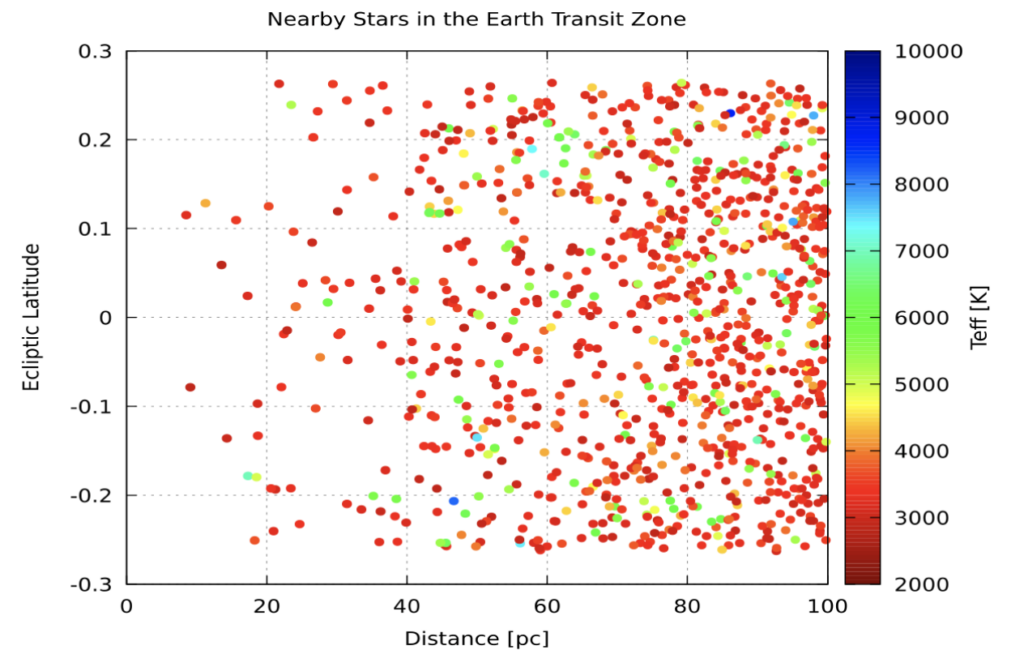
Astrobite edited by Pranav Satheesh and H. Perry Hatchfield
Featured image credit: J. Lubin

